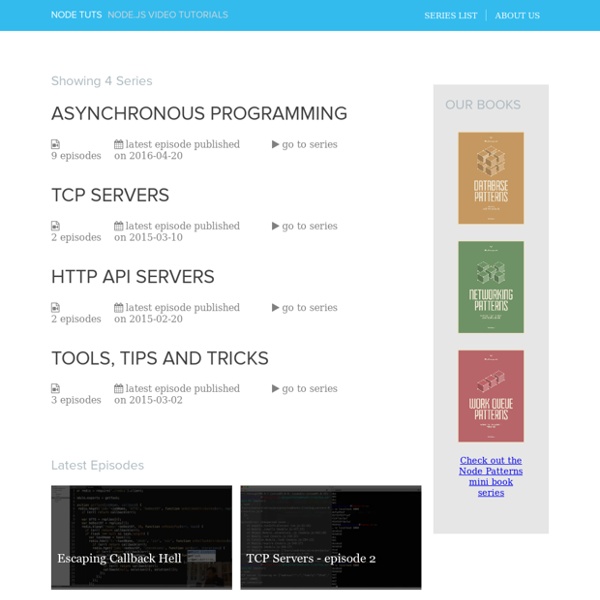



Manual Stability: 3 - Stable To use the HTTP server and client one must require('http'). The HTTP interfaces in Node are designed to support many features of the protocol which have been traditionally difficult to use. In particular, large, possibly chunk-encoded, messages. The interface is careful to never buffer entire requests or responses--the user is able to stream data. HTTP message headers are represented by an object like this: Keys are lowercased. In order to support the full spectrum of possible HTTP applications, Node's HTTP API is very low-level. http.STATUS_CODES# A collection of all the standard HTTP response status codes, and the short description of each. http.createServer([requestListener])# Returns a new web server object. The requestListener is a function which is automatically added to the 'request' event. http.createClient([port], [host])# This function is deprecated; please use http.request() instead. Class: http.Server# This is an EventEmitter with the following events: Example: or
Creating a basic site with node.js and Express A walkthrough on how to create and deploy a basic site with Node.js and the Express framework What we are going to do This walkthrough will go over setting up a basic site using Node.js and Express. The walkthrough is aimed at beginners exploring Node.js as I've had many questions from friends and colleagues about creating and deploying node apps. If you are not a beginner the article probably won't be of much use to you. We are going to use express, an excellent web framework for node created by TJ Holowaychuk who seems to be pumping out Node.js libraries like he was ten men. Here is the site we are going to create. Setup First we need to setup our development environment. If you are on Linux there are plenty of articles on Google. For Windows users there are also resources on Google but it is a bit more tricky. Prerequisites If everything has installed ok you should now have Node.js and npm running on your machine. node -v v0.8.21 npm -v 1.2.12 Create an Express site Still with me? npm start
Mongoose ODM v3.1.2 Code with Node: Learn by Doing Code w/ Node is a web developer course designed to teach you how to create production grade features for a robust web app using Node and Express JS. The course is also designed to help you become a self-sufficient developer who can solve problems on the fly while working through complex features. Overview:Elevate your developer skills in this learn by doing course where we will be building a feature rich, production ready, web application with the NEMO stack (Node Express MongoDB & Other stuff). In this course you will build a production ready RESTful CRUD application that has:- Bootstrap 4 theming- ES6 (and later) syntax- Maps with Mapbox- Geospatial indexing- Search- Filtering- Pagination- Image upload (single and multiple)- Mailers- Password reset Master key skills, including:- Debugging effectively with locus- Looking up solutions online- Problem solving on the fly This isn't your average run-of-the-mill follow along course. Are you ready to become a self-sufficient developer?
The Node Beginner Book » A comprehensive Node.js tutorial laverdet/node-fibers Node.js and Redis Pub-Sub Static Version This is the 7th in a series of posts leading up to Node.js Knockout on how to use node.js. This post, cross-posted from GitHub, was written by James Bracy, founder of Redis To Go. Redis To Go is a dead simple solution for managed Redis instances. Node.js and Redis Pub-Sub Node.js is a perfect platform for creating event driven applications. Dependencies Node.js, Redis, and a WebSocket enabled browser (Firefox 4, Google Chrome 4, or Safari 5) are required. The easiest way to get a Redis instance would be to use Redis To Go. $ git clone cd redis/src$ make$ sudo make install$ cd ../..$ rm -rf redis Now you can start a Redis instance locally using the redis-server command. Create the Project Create a directory for the project. $ mkdir flight-stream$ cd flight-stream The project will require the Node.js Redis client redis-client, the WebSocket library node-websocket-server, and the MIME library node-mime. Create the Server server.js $ mkdir public
The Node Beginner Book » A comprehensive Node.js tutorial Introduction to Node.js